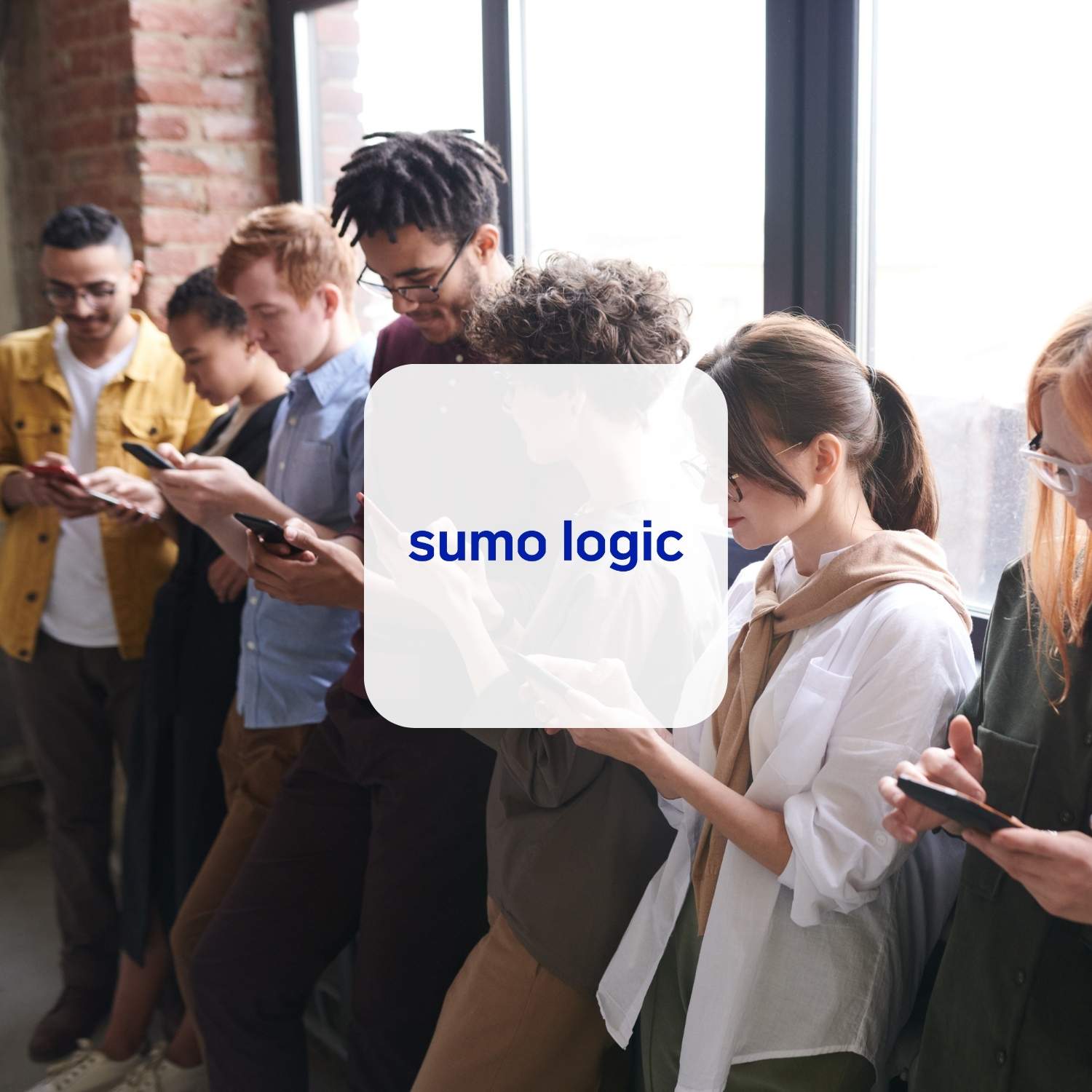
Sumo Logic is a firework in the startup world.
Key Results
How leveraging Salesforce Communities is helping a software provider better its product, connect its customers, and establish its thought leadership in a fast-paced industry.
- Democratized internal knowledge to make it available for all users
- Created a one-stop shop for questions, exploration of new products, potential ideas, and collaboration
- Improved user onboarding to instantly empower them to thrive
The Background: About Sumo Logic
The California-based company provides secure, cloud-native, machine data analytics service, delivering real-time, continuous intelligence across the entire application lifecycle and stack. Its log analysis technology allows users to analyze and act on loads of real-time data to find patterns and detect anomalies that help systems administrators keep apps available, secure, and continuously delivered.
In short: Sumo allows users to make the most of the insane amount of machine data that applications generate. For a company like Akamai that utilizes over tens of thousands of servers, it makes terabytes of data a cinch to analyze, search, and batch, giving administrators app performance data as well as customer usage data essential to business operations.
With an impressive client roster of forward-looking, cloud-centric companies ranging from companies doubling down on their cloud infrastructure, like Hearst and McGraw Hill, to those born in the cloud, like Airbnb, Sumo serves a diverse range of traditional and disruptive startups.
Also impressive: Sumo quickly became a VC darling, taking that money and doing something that would light any investor up. They spent it wisely, investing in elements that would further propel its intense growth stage. First, it nearly doubled its workforce to 400 employees. Second, it turned to its customers, who were repeatedly calling for a little something more beyond platform functionality: a robust online community.
Which just so happens to be something Sumo takes very seriously.
We felt like the CodeScientists were an extension of our team. The care with which and the timeliness with which they were able to make things happen was incredible.”
Maria Ogneva, Head of Community, Sumo Logic
The Test: Current State, Future Goals
In the midst of all of Sumo’s growth, the challenge hasn’t been in perfecting its platform. (It’s doing that on the regular, and with great success.) Instead, the greater challenge has been in figuring out the best way to set its customers up for success, in order to both create a better external customer experience and internally drive customer lifetime values up.
We know our customers really well and care about them deeply,” says Maria Ogneva, Head of Community at Sumo Logic. “What we were lacking was the ability to communicate consistently, to all customers, and the structure to facilitate the many-to-many, peer-to-peer magic we knew could exist amongst our visionary customers.”
As internal headcount and customer numbers grow, Sumo was also finding it difficult to maintain consistency of messaging, especially as it pieced together approximately seven different SaaS tools for various tasks from customer support tickets to an ideas portal. What was working wasn’t quite working efficiently.
With customers asking and internal needs making themselves clear, Sumo Logic went to work exploring options for building a centralized hub for all communication. It wasn’t long before a serendipitous referral brought them to CodeScience, where together, they determined that Salesforce Communities was the way to go.
“We’re standardized on Salesforce as our customer system of record, so we looked at how we are currently touching customers now versus what they need,” explains Maria. And with customers hungry for the ability to connect, the ease of Salesforce’s Napili Template (a winter 2016 release), gave CodeScience and Sumo the ability to bring this project to fruition, fast.
And so began The Test: a test involving only a two-person development team with an agreeably aggressive timeline of six weeks to launch.
That launch came with equally aggressive goals: A one-stop community where customers could not only access everything they could ever need surrounding customer support (help documentation, ticket submission, event information, and more) while also interfacing with each other, but also give Sumo insight into customer usage that would positively amplify its own customer lifetime value.
All while walking in on a brand new product from Salesforce with a technology all its own.
The Science: Lightning Components at Lightning Speed
The first (major) element setting this project apart from those that have come before is its template-based nature. But like any cutting-edge tech startup, Sumo wasn’t interested in using a template straight out of the box. And despite the versatility and depth of the Salesforce suite, neither was CodeScience. There’s magic in being different, and together, CodeScience and Sumo were out to find it.
Template-based, but not out-of-the-box
CodeScientists Mohith and Crystal upped the ante by using the Napili template, a Lightning-based template that Salesforce debuted at its most recent Dreamforce event. The gist: The template provides a foundation where Lightning components can be dragged and dropped in. The benefits: It’s extremely secure and directly integrated with Salesforce. The challenge: It’s brand new.
Never cookie cutter
With the entire site run on Napili, all work had to be done with Lightning components — but not all needed components were available. This gave Mohith and Crystal the room to stretch their C|S muscles and build what was needed. “While Salesforce was working on making Community Cloud stronger, we were building the components that weren’t available,” says Mohith.
Fans of diversity
While Salesforce has solutions for all of the different areas Sumo was looking to address, from customer service to an ideas portal to a knowledge base, Sumo wanted to integrate a few of the third-party apps it loves, like ZenDesk and Aha! What this meant: data migrations and transfers to make integrations seamless on one centralized hub.
Best practices, on steroids
Typically operating via Agile methodology, the C|S team had to step it up even further due to the aggressive timeline. From Mohith: “We ran a very thin team, but approached it with the highest coding standards and followed Agile to keep creating stories, breaking them down into issues and running in sprints.”
Says Maria, “It’s important to like the people you work with. This was more than a mutual like — at all times, we felt like the CodeScientists we’re an extension of our team. The care with which and the timeliness with which they were able to make things happen was incredible.”
Three’s a party
Maria played a key role in leading the project and providing insight into the requirements. With an in-depth knowledge of Salesforce and first-hand experience with Sumo customers, a two-person development team quickly became a three-person roundtable.
CodeScience delivered everything within the timeline that we wanted. And they helped us to also make well-informed trade-offs in terms of keeping us on time and within budget.”
Maria Ogneva, Head of Community, Sumo Logic
The Results: Connected Customers, Thriving Over Surviving
More importantly, the new Sumo Community beta has one notable outcome that positively impacts both its customers and its internal operations: The platform helps Sumo democratize knowledge with a consistent voice.
“The customer was the center of thought when we were building this. It was very much about reducing the burden on them, and facilitating collaboration,” says Mohith.”
Says Maria, “Customers come to our sales engineers for specific solutions. Previously, those solutions were stuck in individuals’ emails, where no one else could benefit from the answers. The Community gives us the opportunity to liberate some of that information; to democratize it.”
In addition, running things through the community, which now integrates with documentation hub to bring up both community answers as well as internal docs, allows for Sumo to easily manage the messaging and tone of its communications.
This democratization and smoother management of knowledge does three initial things for Sumos’ customers:
- Helps customers get up to speed: On top of a detailed onboarding program both online and off, having a community of fellow users doing what they’re doing helps customers ease right into the product and learn the platform faster, and in a relatable way.
- Helps customers use Sumo’s platform better: In Maria’s words — “Sumo is an analytics platform that ingests a lot of data that you can do a lot of cool things with. Customers buy us for a number of use cases, but through this community, that use will expand as they discover how other companies are using it. Cross-pollination of use case stories will inspire customers to do more and learn what they don’t know.”
- Helps customers thrive, not just survive: Sumo’s users are looking for more than a set of features; they’re looking for a peer group to turn to when the unsettled feeling of ever-changing technology sets in. The desire for a sense of belonging doesn’t go away no matter how savvy you are, technically. With a one-stop shop for questions, exploration of new products, potential ideas, and collaboration, customers are quickly empowered to thrive from the minute they join.
It also sets Sumo up for future success by giving the company insight into its customers + product development. Like any SaaS product, customer retention is incredibly important for Sumo, and by monitoring Community participation, Sumo can get a firm grasp on customer usage and product development ideas. Says Maria, “They speak, we listen. They ask questions, we listen.”
A truly collaborative solution
Maria’s depth of knowledge and the support of Salesforce Engineers amplified the synergy in the room. According to Mohith, “The Agile methodology coupled with incredible project braintrust allowed us to accomplish a lot in a little bit of time, and overcome roadblocks quickly.”
Maria and the Sumo team were equally as delighted: “CodeScience delivered everything within the timeline that we wanted. And they helped us to also make well-informed trade-offs in terms of keeping us on time and within budget.”
What’s on deck
When Maria came on the Sumo team in August of 2015, her agenda consisted of one, overarching goal: bolster Sumo’s online community to allow customers to meet online, not bound by time zone or geography.
It’s safe to say this project has made that happen, plus some. Sumo is well on its way to “amplifying, increasing, and turbo-charging” its customers’ collaboration and use of the platform, while also transforming pieces of its business operations.
Maria’s not ready to stop there, though. In her mind, Sumo’s ultimate goal beyond facilitating intense collaboration amongst the genius minds’ of its customers is to establish its own genius.
We’re building a thought leadership platform for the world of machine data — expanding the scope from talking about Sumo-specific things to larger issues in the industry. We’re on the front end.”
Maria
But first, there’s a community to nurture, and the next phase of features to be done.
Whether you’re a long time partner or just now evaluating the Salesforce ecosystem, we would love the opportunity to help you build for success.


